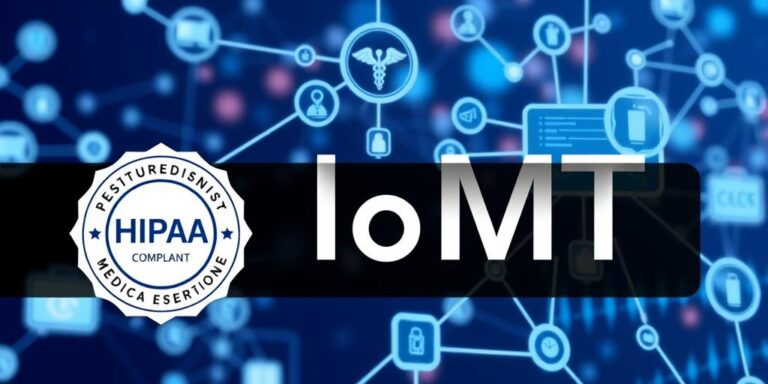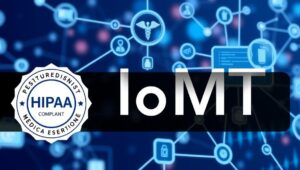Data Privacy and HIPAA Compliance in the IoMT Era (2025+)
The Internet of Medical Things (IoMT) is rapidly transforming healthcare, connecting medical devices and systems to enhance patient care, streamline operations, and improve research. However, this interconnectedness also introduces significant data privacy and security challenges, particularly concerning HIPAA compliance. As we move into 2025 and beyond, understanding and addressing these challenges is crucial for healthcare providers, device manufacturers, and technology developers.
Understanding the IoMT Landscape
The IoMT encompasses a wide range of devices and applications, including:
- Wearable Health Trackers: Devices that monitor vital signs, activity levels, and sleep patterns.
- Remote Patient Monitoring (RPM) Systems: Tools that allow healthcare providers to track patients’ health remotely, often used for chronic disease management.
- Smart Medical Devices: Connected devices like insulin pumps, pacemakers, and drug delivery systems.
- Hospital IoT Infrastructure: Systems that manage and monitor hospital assets, environmental conditions, and patient locations.
Key Data Privacy Challenges in the IoMT
The proliferation of IoMT devices introduces several key data privacy challenges:
- Data Volume and Velocity: IoMT devices generate massive amounts of data, often in real-time. Managing this volume while ensuring privacy is a significant challenge.
- Data Security: IoMT devices are vulnerable to cyberattacks, which can compromise patient data. Securing these devices and the networks they operate on is paramount.
- Data Interoperability: Sharing data between different IoMT devices and systems can be complex, raising concerns about data accuracy and security during transmission.
- Patient Consent and Control: Ensuring patients understand how their data is being collected, used, and shared is essential for maintaining trust and complying with privacy regulations.
- Third-Party Risks: Many IoMT solutions rely on third-party vendors for data storage, processing, and analytics, creating potential vulnerabilities in the data supply chain.
HIPAA Compliance in the IoMT Era
The Health Insurance Portability and Accountability Act (HIPAA) sets the standard for protecting sensitive patient data. In the IoMT era, ensuring HIPAA compliance requires a multi-faceted approach:
- Data Encryption: Encrypting data both in transit and at rest is essential for protecting it from unauthorized access.
- Access Controls: Implementing strict access controls to limit who can access patient data.
- Security Risk Assessments: Conducting regular risk assessments to identify and address potential vulnerabilities in IoMT systems.
- Business Associate Agreements (BAAs): Ensuring that all third-party vendors who handle patient data sign BAAs that outline their responsibilities for protecting that data.
- Incident Response Planning: Developing a comprehensive incident response plan to address data breaches and other security incidents.
- Patient Education: Educating patients about their rights under HIPAA and how their data is being used in the IoMT ecosystem.
Best Practices for Data Privacy and HIPAA Compliance in the IoMT
To navigate the complex landscape of data privacy and HIPAA compliance in the IoMT era, healthcare organizations should adopt the following best practices:
- Implement a Robust Security Framework: Adopt a security framework such as NIST or ISO 27001 to guide the development and implementation of security policies and procedures.
- Conduct Regular Security Audits: Perform regular security audits to identify and address vulnerabilities in IoMT systems.
- Use Data Anonymization and Pseudonymization Techniques: Protect patient privacy by anonymizing or pseudonymizing data whenever possible.
- Establish Clear Data Governance Policies: Define clear policies for data collection, use, and sharing to ensure compliance with HIPAA and other privacy regulations.
- Provide Ongoing Training for Staff: Train healthcare staff on data privacy and security best practices to prevent human error.
- Stay Informed About Regulatory Changes: Keep abreast of changes to HIPAA and other data privacy regulations to ensure ongoing compliance.
The Future of Data Privacy in the IoMT
As the IoMT continues to evolve, data privacy and security will remain critical concerns. Emerging technologies like blockchain and federated learning may offer new solutions for protecting patient data while enabling data sharing and collaboration. Additionally, advancements in AI and machine learning can help identify and mitigate security threats in real-time.
By proactively addressing data privacy challenges and implementing robust security measures, healthcare organizations can harness the full potential of the IoMT while safeguarding patient data and maintaining compliance with HIPAA.




